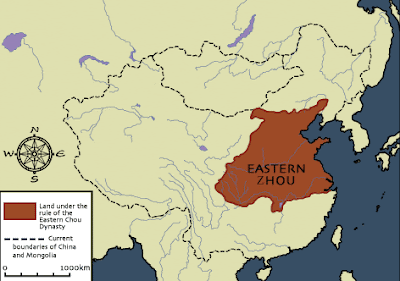Slavs in Russia: from 1500 BC
The steppes, which form a broad pathway into southern Russia from central Asia, have been occupied by nomads since distant prehistoric times. By contrast the northern forests, in a region covered by an ice cap until the end of the latest glacial period, only become open to human settlement some
10,000 years ago (see Ice Ages).
From about 1500 BC the Slavs, an Indo-European group, settle in the region of Poland and western Russia. Vulnerable to attack along the steppes, they are often dominated by other groups (in particular the Khazars). But they hold their territory until the arrival of Vikings from the north.
Vikings in Russia: from the 9th century AD
Unusually for the Vikings, trade rather than plunder is the main reason for their penetration deep into Russia during the 9th century AD. The rivers of eastern Europe, flowing north and south, make it surprisingly easy for goods to travel between the Baltic and the Black Sea.
One spot is particularly well-favoured as a trading centre. Near Lake Ilmen the headwaters of the Dvina, Dnieper and Volga rivers are close to each other. Respectively they flow into the Baltic, the Black Sea and the Caspian. Goods ferried by water between these important trading regions converge on this area. By the early 9th century Viking tribes known as the Rus have a base on the site of Novgorod.
Although they are not Slavs, there is justice in the Rus giving Russia her name. Their development of trade, particularly down the Dnieper (a route which becomes known as Austrvegr, or the 'Great Waterway'), lays the foundation of the Russian nation.
In 882 a Viking leader, Oleg, moves his headquarters down the Dnieper, seizing the town of Kiev. Here, in 911, he negotiates a commercial treaty with the Byzantine empire.
A Viking successor of Oleg's in Kiev, two generations later, describes how this first Russian city is the centre of a triangular trade between civilized Byzantium in the south, the steppe lands in the middle, and the wild forests of the north.
In this place 'all goods gather from all parts: gold, clothes, wine, fruits from the Greeks; silver and horses from the Czechs and Hungarians; furs, wax, honey and slaves from the Rus'.
The first Russians: 10th - 11th century AD
The rulers of Kiev in the 10th century are still Vikings. But as they settle and become more prosperous they begin to seem something new and different - Russians. This is particularly true of Vladimir, who is proclaimed prince of all Russia in 980 after capturing Kiev from a rival.
Vladimir's early life is spent in full-blooded pagan style, fighting and wenching (the chronicles credit him with 800 concubines), but in about 988 he takes a step which gives Russia its characteristic identity and brings him personally the halo of a saint. He sends envoys out to discover which is the best religion. Their report persuades him to choose for Russia the Greek Orthodox brand of Christianity.
The new religion is rapidly imposed upon the towns under the control of Vladimir and his family. The inhabitants of Novgorod, the most prosperous of these towns apart from Kiev itself, are forcibly baptized in 989.
Vladimir won Kiev in 980 after a fight to the death between himself and various brothers, and the process is repeated after his own death in 1015. His successor, Yaroslav the Wise, is the survivor of five sons of Vladimir. Yaroslav kills the last of them in 1019 and is accepted as grand prince of Kiev.
Vladimir's descendants: AD 1019-1169
The 35-year reign of Vladimir's son Yaroslav establishes Russia, with its capital at Kiev, as a kingdom in the mainstream of medieval Europe. It also secures the throne for a dynasty which survives in direct descent for six centuries (till the time of Boris Godunov), even though those centuries see much diminution of Russian territory and a shift of power from Kiev to Moscow.
Yaroslav turns Kiev into a glorious Christian city in the Byzantine tradition, founding monasteries, adding a spectacular Golden Gate to the town's fortress, and building a cathedral dedicated, like Justinian's great example in Constantinople, to holy wisdom - Santa Sophia.
He also follows Justinian in commissioning a codification of Russia's laws. The legal code known as Russkaya Pravda (Russian Truth) is founded in his reign.
On the international stage Yaroslav plays the medieval game of matrimonial diplomacy as assiduously as any of his contemporaries. He marries his three daughters to kings of Norway, France and Hungary. He also has four sons, guaranteeing on past evidence a frenzy of bloodshed after his death. To avoid this Yaroslav devises a code of inheritance. Surprisingly, for two generations at least, it works.
Under Yaroslav's system of inheritance all Russia is to be jointly held by the ruling family. His eldest son is to rule in Kiev, while others are assigned to territories elsewhere. When a prince of Kiev dies, there is to be general post. The next senior brother will move to Kiev, with equivalent adjustments throughout the realm. The principle that brothers take precedence over sons is an essential element of the scheme, for it gives the younger brothers a chance to inherit without risking all in warfare.





















